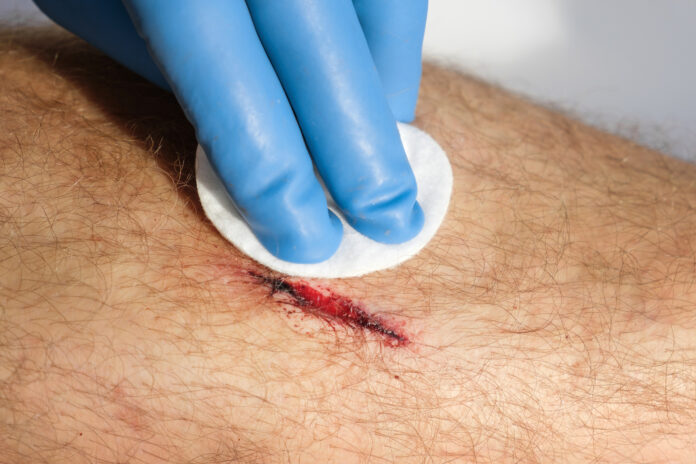Infection
Pocket-Sized Device Can Help Clinicians Quickly Identify Infected Wounds
An international team of researchers has developed a pocket-sized device that can help clinicians identify infected wounds faster. Traditional methods for detecting wound infections are often imprecise since known methods of identifying bacteria are often time-consuming and not available rendering current diagnoses subjective and largely based on the clinician’s experience. But infections allowed to thrive can hamper healing if it spreads into the body, or could put the patient’s health in danger.
The new device, described in a paper published in Frontiers in Medicine, is an app that uses heat signatures and bacterial fluorescence to quickly and accurately detect an infection allowing clinicians the chance to treat the infection earlier.
“Wound care is one of today’s most expensive and overlooked threats to patients and our overall healthcare system,” said Robert Fraser of Western University and Swift Medical, the corresponding author of the study. “Clinicians need better tools and data to best serve their patients who are unnecessarily suffering.”
Called Swift Ray 1, the device is designed to attach to a smartphone and is integrated with the Swift Skin and Wound software, enabling it to capture medical-grade images, infrared thermography images, and bacterial fluorescence images using violet light to reveal bacteria.
None of these imaging techniques alone can help identify infected wounds. Clinical inspection has a low accuracy rate, while thermography measures heat changes caused by both inflammation and infection. Similarly, bacterial fluorescence can only detects surface-level bacteria, which can be present due to contamination rather than infection.
“Research has demonstrated bacterial imaging helps guide clinicians’ work to remove nonviable tissue, yet it cannot identify infection by itself,” said first author Jose Ramirez-Garcia Luna of McGill University Health Centre. “Thermography provides insight into the inflammatory and circulatory changes happening under the skin.”
To validate the effectiveness of Swift Ray 1, the team conducted tests involving 66 patients with wounds that displayed no signs of spreading infection, foreign objects, or prior antibiotic or growth factor treatments. The wounds were imaged and categorized into distinct patterns based on warmth and bacterial fluorescence.
Using machine learning techniques, the team developed a model capable of accurately identifying wound categories. The model demonstrated a 74% overall accuracy in classification, excelling in distinguishing infected from non-infected wounds (100% accuracy for infected and 91% for non-infected).
While the researchers emphasized that these images should always be considered within the medical context, they noted that the combined use of the Swift Ray 1 device and Swift Skin and Wound software provides clinicians with a set of versatile tools to help them identify infections without the need for expensive analytical tools. This innovation has the potential to lead to faster and more accurate diagnoses for wound patients, including its use for remote assessments in a telemedicine setting.

